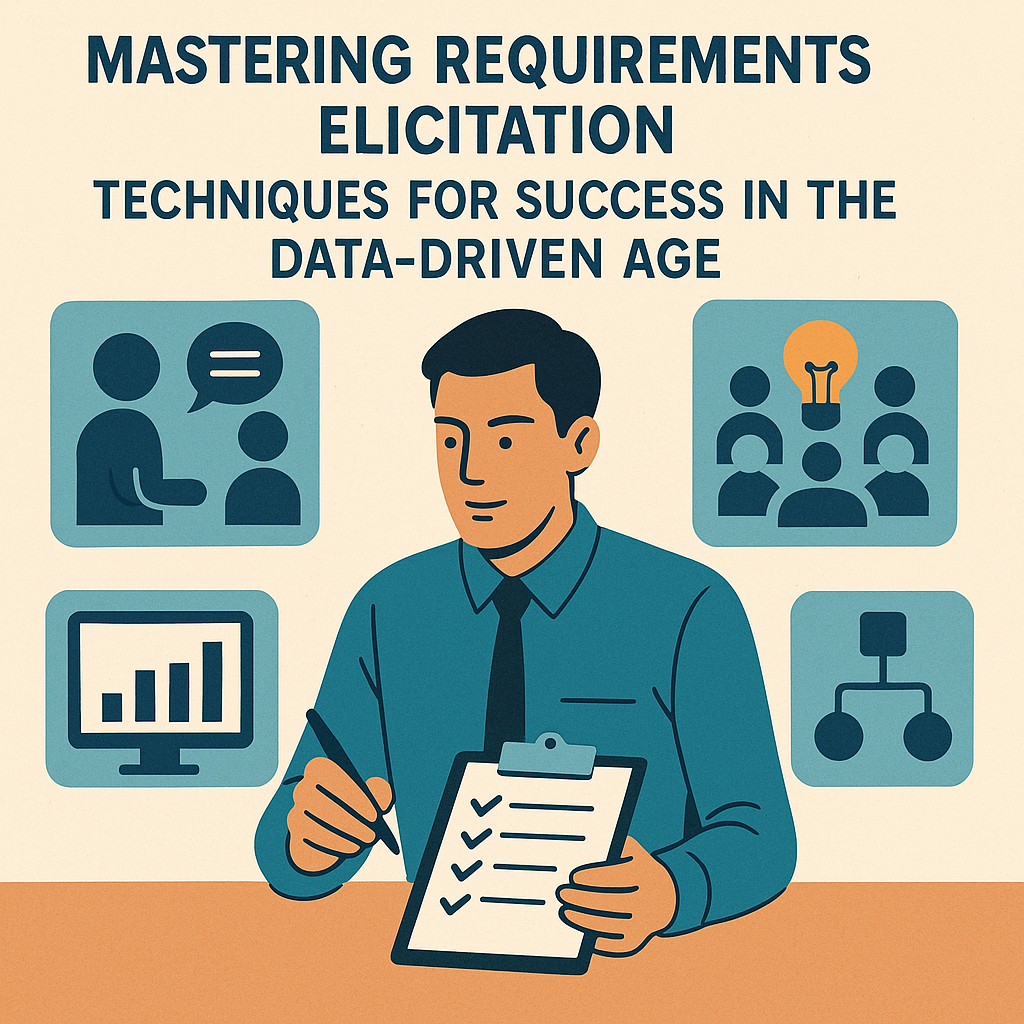
Requirements elicitation is the cornerstone of successful project development. It gathers and defines stakeholders’ needs to ensure that the final product or solution effectively addresses their objectives. While traditional elicitation techniques remain valuable, the increasing availability of data and the rise of AI demand a more robust and insightful approach.
This post explores various techniques for gathering requirements, emphasizing the importance of data integrity and innovative analysis to ensure project success.
Elicitation Techniques: A Foundation
Practical requirements elicitation involves a combination of techniques:
- Interviews: Structured or semi-structured conversations with stakeholders to gather detailed information about their needs, expectations, and pain points.
- Workshops: Collaborative sessions with stakeholders to brainstorm ideas, define requirements, and reach consensus.
- Surveys: Gathering data from a large group of stakeholders to understand their preferences and needs.
- Prototyping: Creating early versions of the product or solution to visualize requirements and gather feedback.
- Use Cases: Describing how users interact with the system to capture functional requirements.
- User Stories: Describing requirements from an end-user perspective, often used in Agile methodologies.
Data Integrity: Ensuring Accuracy and Relevance
In today’s data-rich environment, ensuring the data used to inform requirements is clean, relevant, and current is crucial. This involves:
- Data Sourcing and Vetting: Carefully evaluating the origin and reliability of external data sources.
- Verifying the accuracy and completeness of data.
- Documenting the data sources and methodology used to obtain it.
- Data Understanding: Thoroughly understanding the data’s context, limitations, and potential biases.
- Considering the data’s impact on different stakeholder groups.
- Ensuring that data is used ethically and responsibly.
Innovative Analysis: Thinking Outside the Box
To derive truly valuable insights and identify practical solutions, Business Analysts must go beyond routine analysis and embrace innovative approaches:
- Unconventional Models: Explore non-traditional analytical models to uncover hidden patterns and relationships in the data.
- Creative Data Visualization: Use innovative data visualization techniques to present insights in a compelling and easily understandable manner.
- Scenario Planning: Develop a range of potential scenarios and their impact on requirements to anticipate future needs and challenges.
- Systems Thinking: Adopt a holistic perspective to understand how different parts of the system interact and influence each other, leading to more comprehensive solutions.
Mastering requirements elicitation in the data-driven age requires a blend of traditional techniques, a proactive approach to data integrity, and innovative analysis. By embracing these principles, Business Analysts can move beyond simply gathering requirements and become strategic partners, driving impactful solutions that meet the evolving needs of stakeholders and contribute to organizational success.